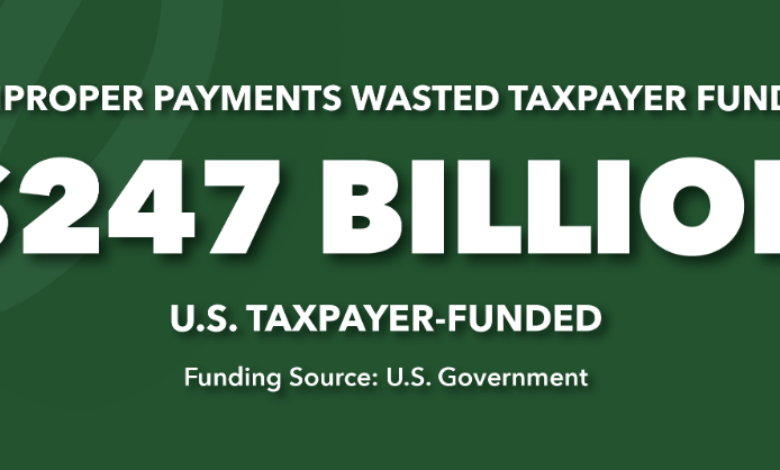
Will this presidential election be the most important in American history?
Investigation by Adam Andrzejewski originally published by RealClearInvestigations.com and RealClearWire.com
In fiscal year 2022, the federal government made a whopping $247 billion in improper payments, down from $281 billion in 2021, but still the second highest gross amount and rate on record.
OpenTheBooks analyzed this wasteful spending in a new report and found the worst programs were Department of Health and Human Services’ Medicaid ($81 billion); HHS’s Medicare — consisting of several parts — ($47 billion); and Small Business Administration’s Paycheck Protection Program ($29 billion).
In 2021, the SBA overpaid $671 million in improper payments but that number ballooned to $37.3 billion in 2022, due mostly to the PPP and COVID-Economic Injury Disaster Loan program — $35.9 billion combined.
Dead people received $532.5 million in 2022 and $441.7 million in 2021 in mistaken payments, including federal pensions, disability insurance, and Social Security.
In 2009, an Executive Order created PaymentAccuracy.gov, a website to track all improper payments made by the federal government, with data going back to 2015.
An improper payment is defined as “a payment that should not have been made or that was made in the wrong amount. That includes overpayments, underpayments, or even payments made to the right recipient in the right amount but not in strict adherence to the relevant statute or regulation.”
In examining programs, federal programs were rated as “high priority” in 2022 if their improper payments exceed $100 million per year. Many agencies on the list have had “high priority” programs multiple years in a row.
It’s appalling that the federal government continues to make hundreds of billions in improper payments each year with little to no oversight. If a business made those improper payments, they wouldn’t stay in business long. Government, however, gets away with it year after year.
__________
By Adam Andrzejewski – The #WasteOfTheDay is brought to you by the forensic auditors at OpenTheBooks.com
This article was originally published by RealClearInvestigations and made available via RealClearWire.



